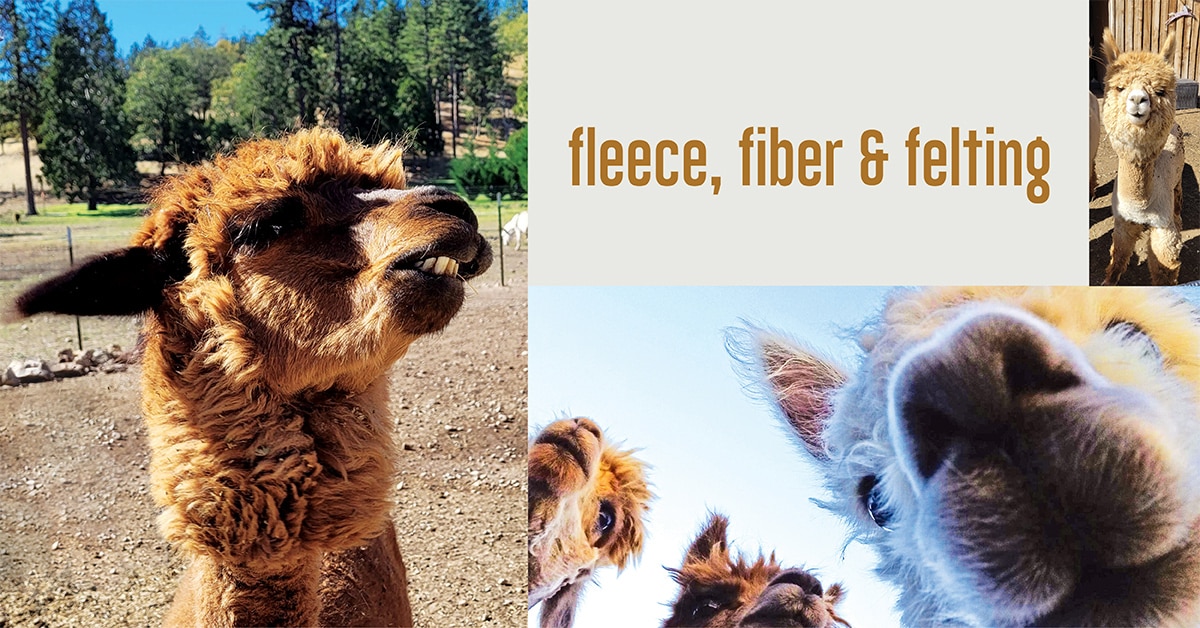Fleece, Fiber, & Felting
Nancy Shelton Transforms Fleece into Art at Alpaca On The Rocks…
It was around 6,000 years ago that the Andean peoples of Peru, Chile and Bolivia began domesticating alpacas. The smallest member of the camel family, their renowned fleece, also called fiber, is soft, strong, and both water and fire resistant. It comes in 22 natural base colors, giving it extreme design flexibility. Unlike sheep wool, an alpaca’s fleece does not contain lanolin, also making it hypoallergenic. And for Nancy Shelton, the owner of Alpaca On The Rocks in Weed, the alpacas she’s raising have become the backbone of her farm. “I started about 10 years ago. I first bought the ranch because I’ve always liked animals. I grew up in Montana, and I always used to have horses and all kinds of stuff. So, I got some mini horses, and then I got a mini donkey, and then I got some mini pigs. Then about 10 years ago, a friend of mine said, ‘You might get something that will pay for hay for the rest of your animals.’ So, that’s when I got three little alpacas.”
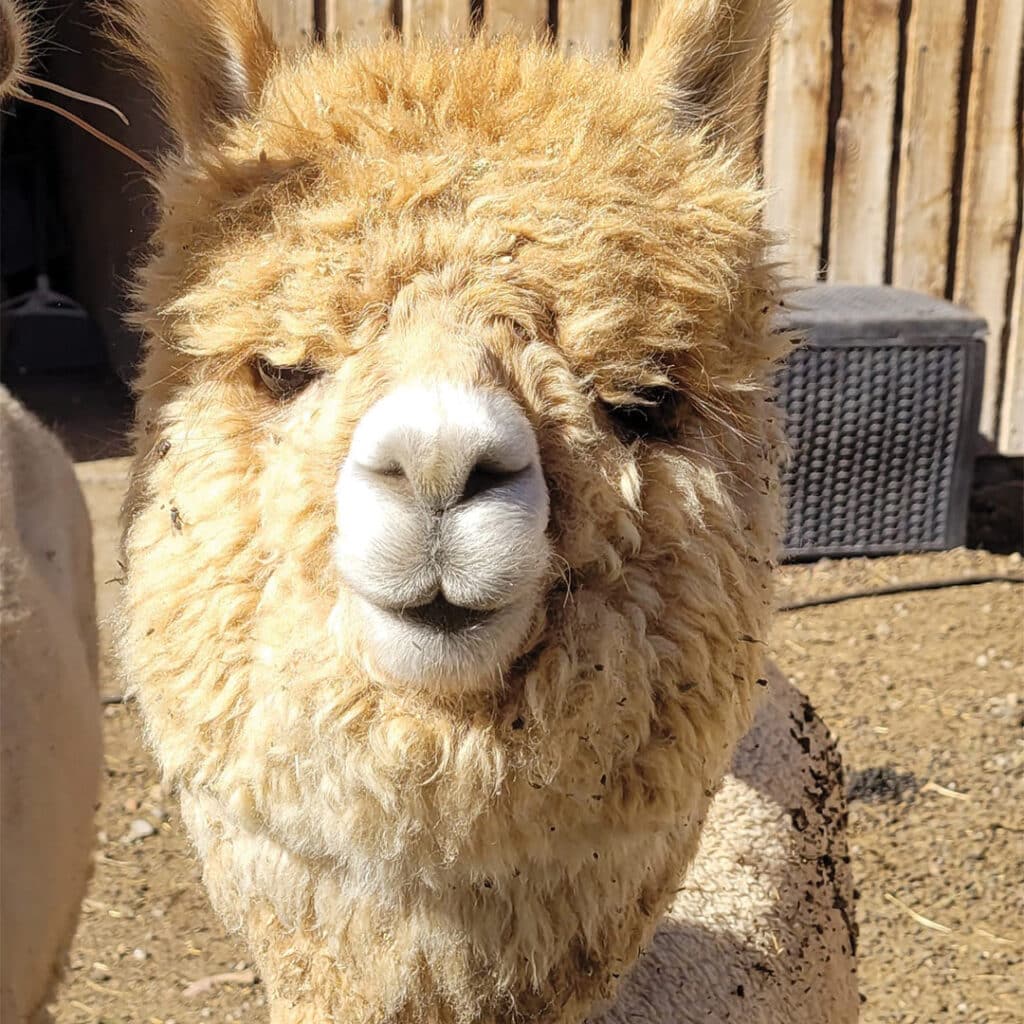
Despite knowing very little about alpacas when she purchased them, Shelton quickly became enamored with the species. “I’ve been around a lot of animals, and alpacas are very different than other animals. They all have different personalities, but they’re generally very sweet and even trainable. They’re also pretty shy and don’t usually spit. I always say that if you’re looking out the window at a pastoral scene, that’s alpacas for you.”
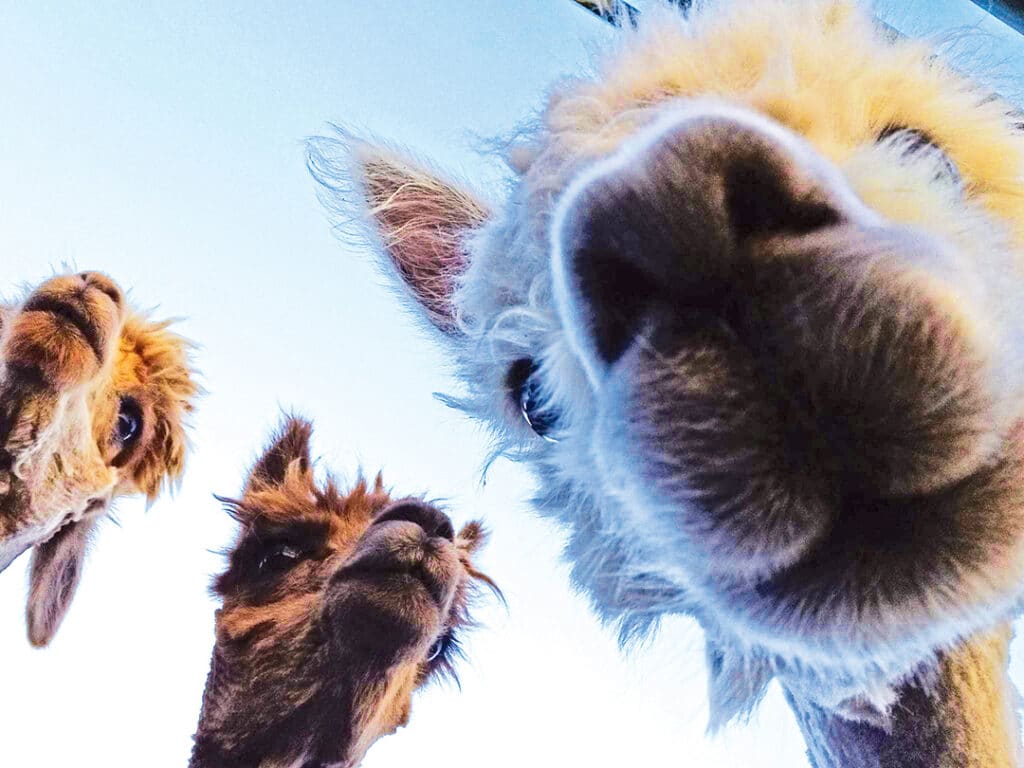
And while alpacas and their llama cousins are both native to the South American Andes mountains, Shelton says it’s easy to tell them apart. “Llamas are typically at least twice as big as alpacas. Whereas alpacas get to be about 110-150 pounds or so, llamas are more like 400 pounds. They’re also much more aggressive and protect everybody. Very few alpacas are aggressive. We had a couple of llamas here for a while, and they watched this place. It was great. But for alpacas, they’re prey animals, and they pretty much know it. And because the biggest killer of alpacas are dog packs, if a dog goes by, they’ll run into a circle and have this weird little screech that they want help.”
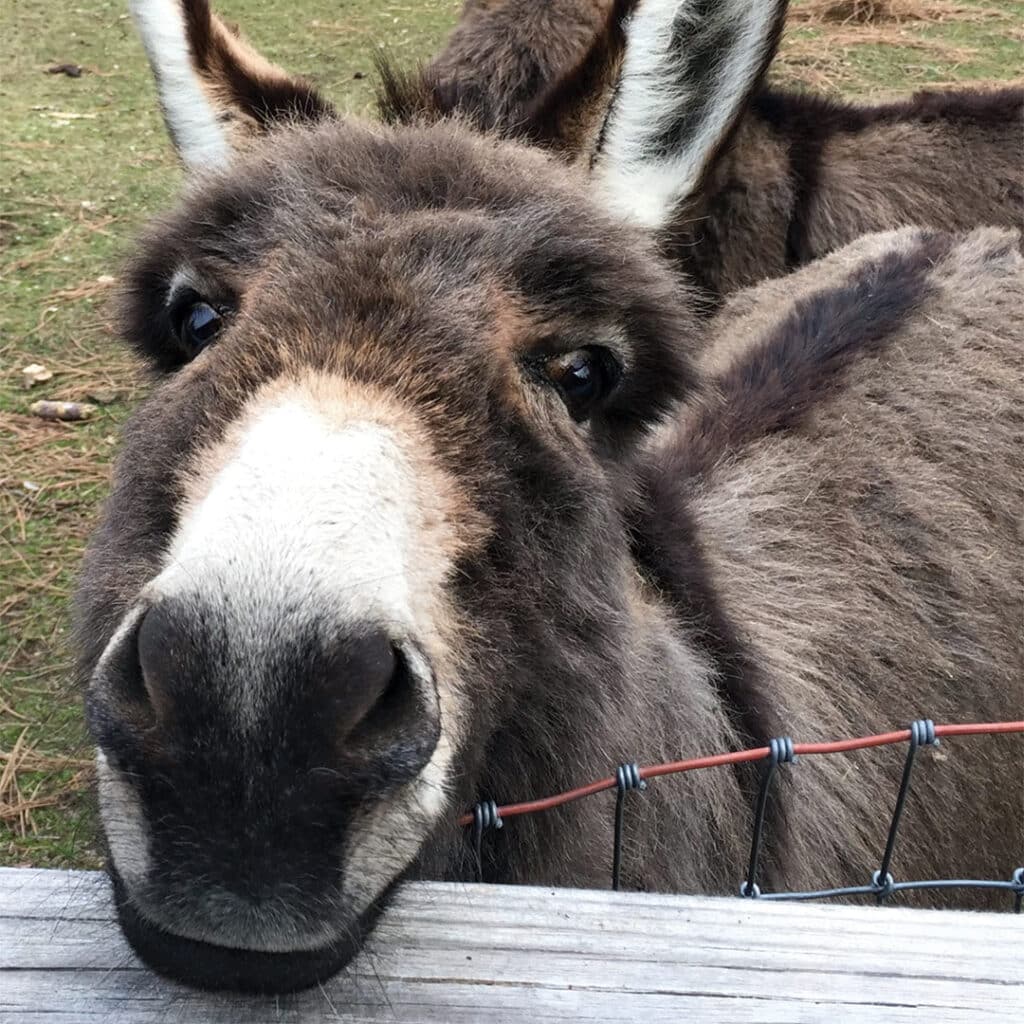
Some Andean cultures occasionally use alpacas as a meat source, but it’s their fleece that they’re almost exclusively raised for, which requires annual shearing. While a springtime shearing is generally the ideal season, any sheering schedule is dictated by seasonal weather. “Shearing can be stressful on them, but we lay them down, put soft things around their ankles and stretch them out on the ground so it’s all safe and they don’t get cut. It really only takes about 15 minutes before everything is done. And once they’re sheared, they have these cute little faces with what looks like a big lion mane around it. Sometimes they don’t always recognize each other afterwards,” Shelton says. And, while it reportedly takes three cashmere goats for a single sweater, it takes only a single alpaca fleece to create about three sweaters. “One alpaca will give you three to four pounds of fiber each. If you get a really, really fancy alpaca, they get up to 10 pounds of fiber.”

Since getting alpacas, Shelton says she’s also expanded her hobbies. “The first time we sheared, we got four huge bags of fleece. We had to do something with it. So, we just started researching about what we could do with the stuff. I never learned to knit or crochet or sew or any of that kind of stuff when I was a kid. So, this was brand new, every bit of it. But it turns out, there are a huge number of things you can do with the fleece. You can do yarn and wet felting, which makes just sheets of felt. You can also do needle felting, which I really got into and found it was really fun. It’s kind of like sculpting in fiber. You take the fiber from the animal and you poke it with a special needle and it compresses it, and then you build on it. And now I make all sorts of weird little creatures and animal portraits, like a three-dimensional kind of art. It’s endless, the things you can do.”
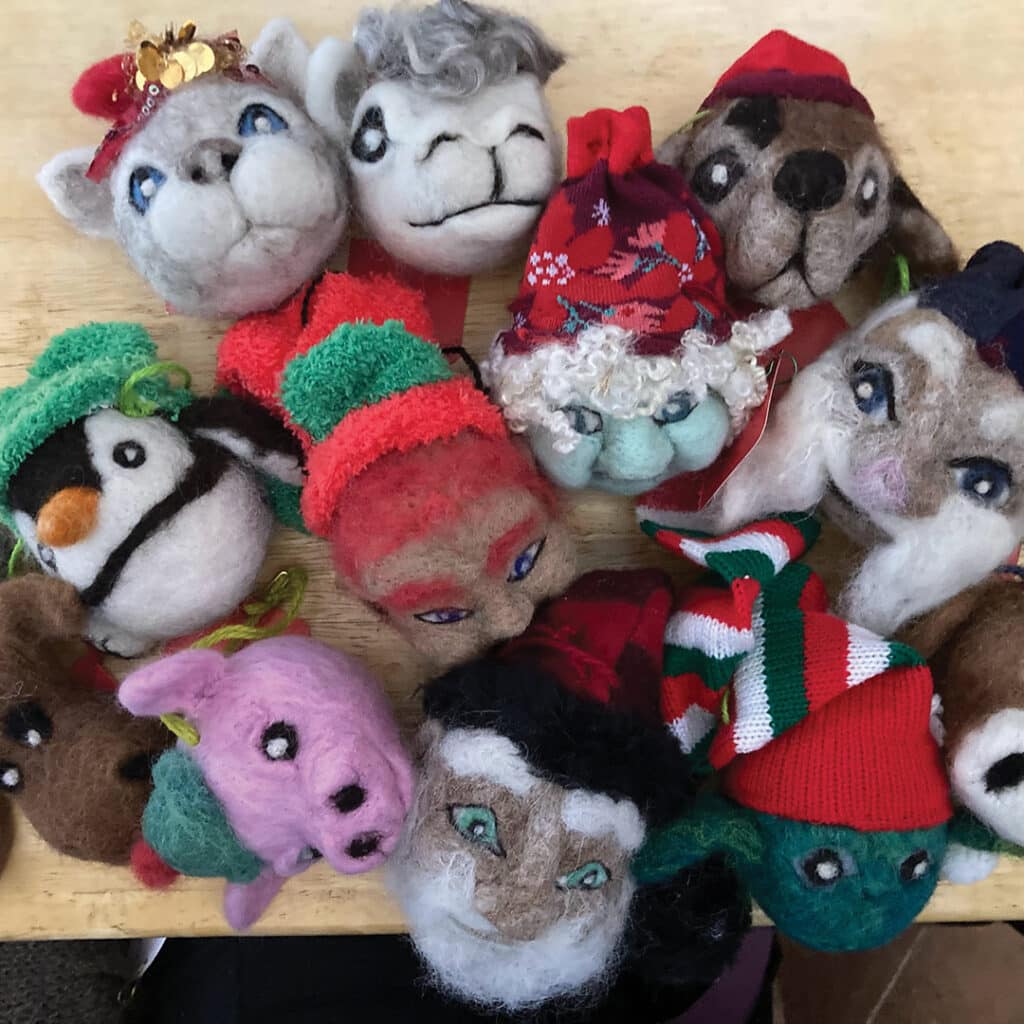
Not only does Shelton sell locally made items from alpaca fiber in her farm stand, she also does farm tours on weekends and by appointment. “We’ve done several schools, but we’re also just open for people to visit on the weekends. People come in and take a tour with their families, and we have the alpacas, as well as many horses, donkeys and the house pigs. It’s a fun tour.” Shelton is also looking at expanding into classes where people can learn to work with alpaca fiber. She encourages anyone who wants to learn more, to reach out. “We just got the studio set up about a couple months ago, so I’m hoping by this summer we can make the classes public. We’ll announce on Facebook, but people can always just contact me too. We have a lot of things that we could teach.”•
Nancy Shelton • Alpaca on the Rocks
5004 Solus Drive, Weed • (590) 859-1994
www.allthingsalpaca.com • Find them on Facebook

